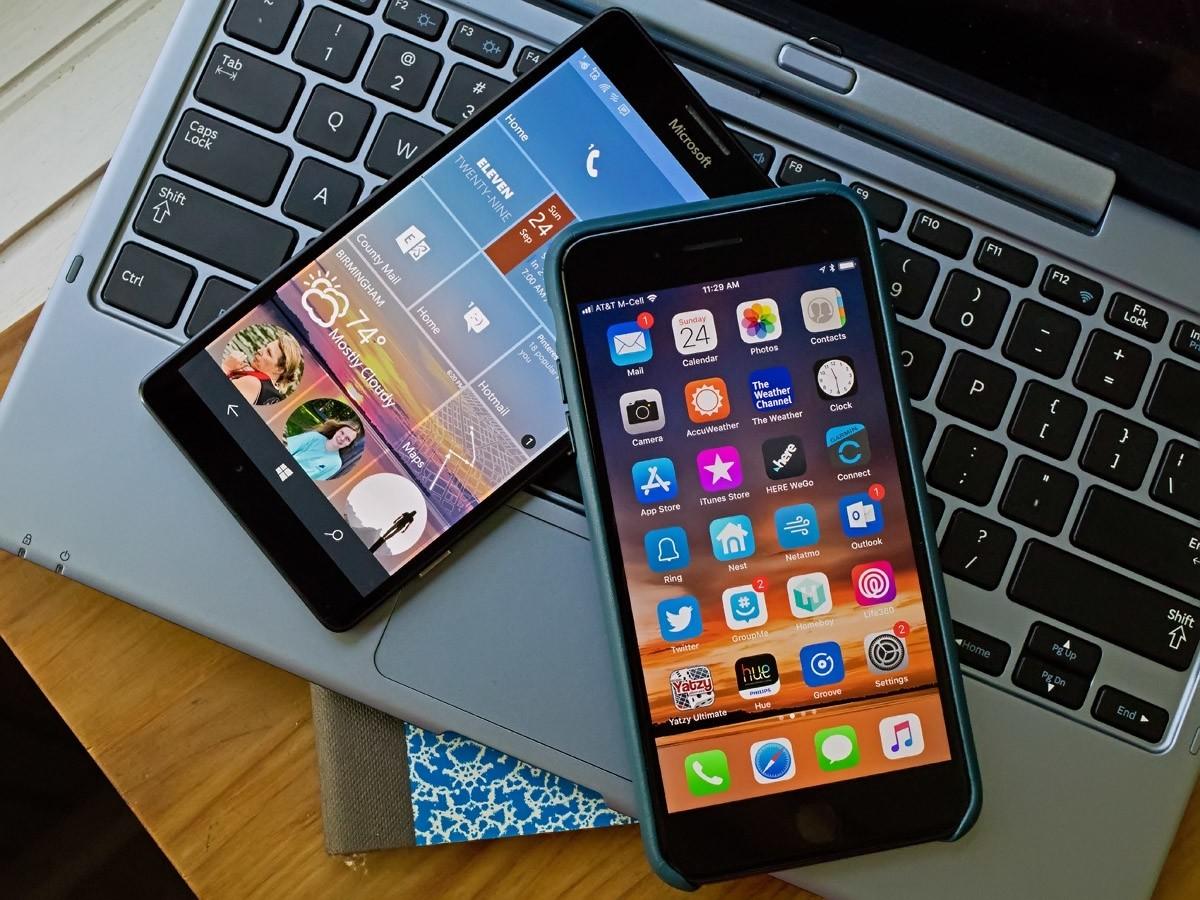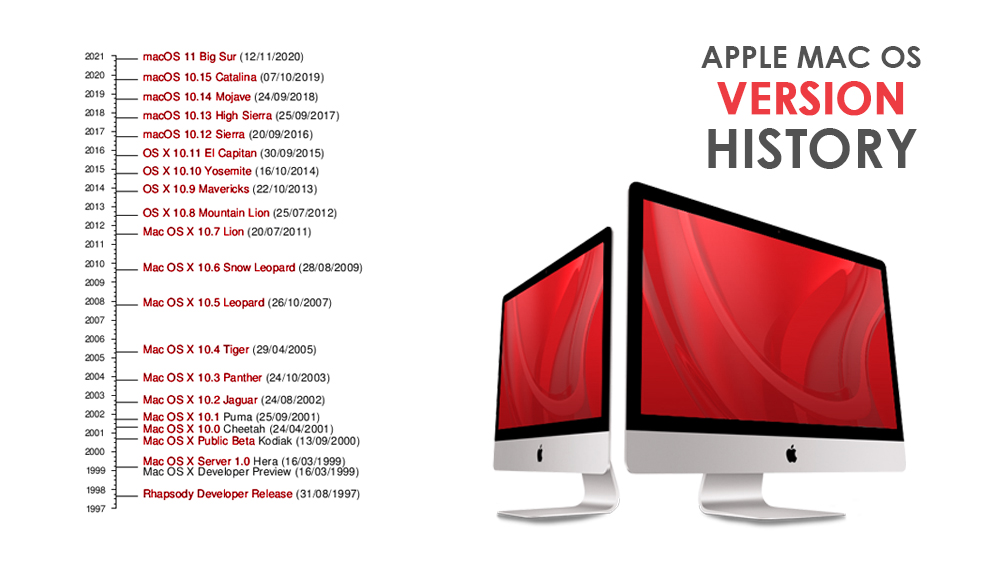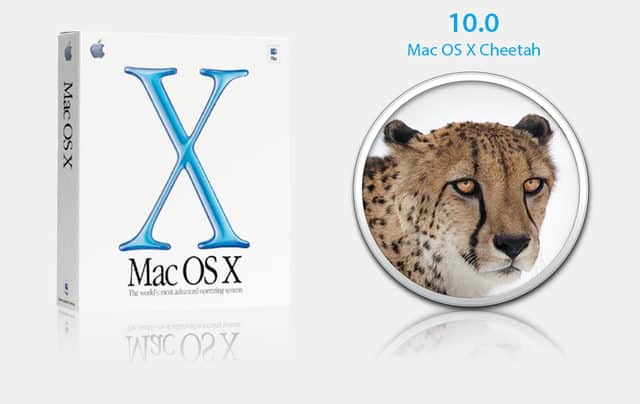

- #MAC OS VERSION HISTORY MAC OS#
- #MAC OS VERSION HISTORY UPDATE#
- #MAC OS VERSION HISTORY UPGRADE#
- #MAC OS VERSION HISTORY SOFTWARE#
- #MAC OS VERSION HISTORY SERIES#
It was a major upgrade that added a user interface overhaul, new applications, system stability improvements, and many new features. It allowed users to record mouse and keyboard inputs. One of the few features introduced was a utility called MacroMaker.
#MAC OS VERSION HISTORY SOFTWARE#
System Software 6 served as a consolidation release of the Macintosh system software, producing a complete, stable, and long-lasting operating system. System Software 5 was available for a short time and only in select countries.
#MAC OS VERSION HISTORY UPDATE#
The main feature of System 5 was MultiFinder, an extension that let the system run several applications at once, and an Installer, a tool that could be used to update a previous System folder to a new version.

Towards the end of 1987, Apple introduced a package called “Apple Macintosh System Software Update 5.0”.įor the first time, the Macintosh operating system was offered as a distinct retail product that included four 800K disks and three manuals, at a cost of US$49. System 4.0 was released with the Macintosh SE and System 4.1 shipped with the Macintosh II-these new machines required additional software support for their new expansion slots, Apple Desktop Bus, internal hard drives, external color displays, and the first Motorola 68020 processor. SCSI (small computer system interface) is a set of standards used to connect and share data between multiple physical devices.ĪppleShare acts as a file server using AFP protocol to share files. It was introduced with the Macintosh Plus, officially implementing HFS, 800K startup drives, support for several brand new technologies including SCSI and AppleShare. System 2.1 version specifically supports the Hard Disk 20, the first hard disk from Apple specially made for Mcintosh 512K. It also introduced support for the LaserWriter and added a Hierarchical File System which allowed file directories to be searched quickly regardless of size. System 2 added support for AppleTalk which allowed a local network of Macintosh computers to be connected without the need for a centralized router or server. The difference between desktop accessories and applications was that multiple desktop accessories could be run simultaneously, but only one application could run at a time.ĭue to the absence of a Hard disk and a very low amount of ram the system 1 performs slow. System 1 also featured seven desk accessories like the Alarm Clock, a basic 10 button Calculator, a Control Panel, Key Caps, a Note Pad, a 15 piece slide Puzzle, and Scrapbook, which was like a cut, copy, and paste library. It had 5 basic headers on the desktop: the Apple menu, File, Edit, View, and Special. The menu bar was also a new and revolutionary part of the operating system. It included a Finder, a file manager responsible for launching applications, and the overall user management of files, disks,Īnd network volumes. The most unique part of this OS was it has a Graphical User Interface where you see the menu and options on the screen.
#MAC OS VERSION HISTORY SERIES#
The classic Mac OS (System Software) is the series of operating systems developed for the Macintosh family of personal computers by Apple Inc. from 1984 to 2001, starting with System 1 and ending with Mac OS 9.
#MAC OS VERSION HISTORY MAC OS#
In 2000 they launched the 10th version of Mac OS and for the first time, the naming style changed from number to alphabet.Īnd after the release of MAC OS X, every version was released with a Codename. Then from system software 1 to mac OS 9 apple keep named their OS with numbers. It was called the Macintosh System Software, introduced with the original Macintosh computer. So to keep things simple, people began using system file version numbers to differentiate between the various OS iterations. Early versions of Mac OS didn’t have specific names. In the earlier days, the OS does not name like MacOS or anything like this.

And for that reason, there was no distinction made between the operating system software and the hardware it ran on. In fact, Apple’s goal was to create a computer with appliance-like simplicity. More detailed story here “ The Evolution Of Macintosh“. It was the first easy-to-use machine created for people who may not be interested in technology. Over time they are able to create a strong bond with their customers which eventually helps them to become successful.īut do you know Apple started its journey as a computer company named Apple Computer? Yes in the year 1984 Steve Jobs first launched the Macintosh, the first commercial computer to feature a graphical user interface and mouse. That’s why they are able to compete so well in different categories simultaneously. They always assure the quality of their products by maintaining a high standard which makes them unique in the industry. Right now Apple competes extremely well in the three most valuable sections, like smartphones, tablets, and smartwatches. Today, Apple has established itself as the largest and most diverse product ecosystem in the computer industry.


 0 kommentar(er)
0 kommentar(er)
